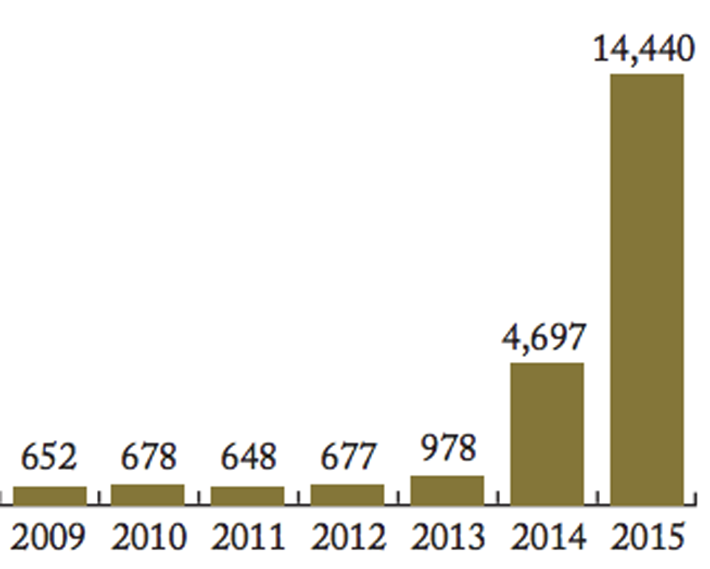Drug Abuse and Geography—Why Some Areas are Affected More Than Others Are

At this point, it is all but common knowledge that the United States is struggling with a very serious drug addiction epidemic. Since the late 1990s, this problem has been growing and expanding, creating big difficulties and significant crisis for millions upon millions of Americans.
At the center of the addiction problem, opioid drugs reign as the primary drug addiction epidemic in America. According to the Centers for Disease Control and Prevention, opioid drugs are the main factor in more than two-thirds of the overdoses deaths that occur in the U.S. every year. In fact, the CDC recorded forty-two-thousand, two-hundred and forty-nine overdose deaths in 2016, a death toll five times greater than the 1999 recording.
Opioid Drug Abuse is Worse in Certain Areas
The entire nation is gripped in an opioid addiction problem. However, not all areas have been treated equally in the spread of this epidemic. That is to say that different areas face addiction struggles differently. While all states have experienced significant increases in their own substance abuse problems over the last twenty years, there are some states that have been hit particularly hard with opioid problems. According to the CDC:

- West Virginia has the highest opioid overdose rate per capita, meaning that more people die from opioid overdoses in this state (when compared to its population) than in any other state. Fifty-two people die from opioids for every ten-thousand residents in this state.
- Ohio is next in line, with just over thirty-nine deaths for every one-hundred-thousand residents.
- New Hampshire has its own skyrocketing, opioid overdose problem, with exactly thirty-nine residents dying from opioid overdoses for every one-hundred-thousand residents.
- Pennsylvania comes in next, with thirty-seven deaths from opioids for every ten-thousand residents.
- Kentucky has also struggled with a major opioid overdose battle of its own, with thirty-three residents for every one-hundred-thousand residents dying from overdoses.
And these states are by far not the only states that experienced surges in opioid overdoses. The following states all experienced significant overdose increases from 2015 to 2016:
- Connecticut
- Delaware
- Florida
- Illinois
- Indiana
- Louisiana
- Maine
- Maryland
- Massachusetts
- Michigan
- Minnesota
- Missouri
- New Jersey
- New York
- North Carolina
- Oklahoma
- South Carolina
- Tennessee
- Texas
- Vermont
- Virginia
- Wisconsin
All of these states saw significant upticks in overdoses from the 2015 to 2016 time period. Research is not yet completed for the 2016 to 2017 period, but estimators gather that the 2016-2017 analysis will provide even more grim rankings.
And U.S. states are not the only places that see crippling overdose increases either. Individual cities are experiencing major overdose epidemics. In fact, some cities in Appalachia and across the Middle South are experiencing such terrible influxes of opioid overdoses that they have had to rent several, mobile, refrigerated meat trucks to house the dead bodies for autopsies, as their local mortuaries have been completely overwhelmed.
Individual cities do have tallied information on 2016 to 2017 overdose death rates, and it isn’t looking good for several of them. According to an NBC News report, the following cities all experienced a fifty-four percent increase in their overdose rates just from July of 2016 to September of 2017:
- Chicago
- Philadelphia
- Milwaukee
- Cleveland
- Columbus
The common denominator we keep seeing here is that, while the entire nation is struggling with this problem, some areas have been completely crippled with overdoses, while others have simply noticed a concerning but not crippling increase in statistics.
Expert Viewpoints on the Opioid Epidemic

The CDC has been following this problem very closely since it began almost twenty years ago. According to the CDC Acting Director, Dr. Anne Schuchat:
“We're currently seeing the highest drug overdose death rates ever recorded in the United States. The issue of cutting heroin with fentanyl is a very major problem right now. What you are seeing in Columbus is for sure occurring in other areas.”Another expert, Daniel Raymond, the deputy director of the Harm Reduction Coalition, also weighed in on this problem:
“The opioid overdose rates were primarily driven by prescription painkillers. They weren't concentrated in urban areas. But the recent rises are mostly driven by heroin, and particularly fentanyl, and the latter seems particularly prevalent in urban drug markets.“The opioid overdose rates were primarily driven by prescription painkillers. They weren't concentrated in urban areas. But the recent rises are mostly driven by heroin, and particularly fentanyl, and the latter seems particularly prevalent in urban drug markets. That’s certainly true in places like Ohio and Philadelphia, which are seeing a lot of fentanyl-involved overdose deaths. That doesn't mean the problems have waned in smaller cities and rural areas, which are also seeing fentanyl, but we are seeing increasing vulnerability in major urban centers.”
And according to a direct quote from a CDC research project on the overdose crisis:
“Every demographic group saw a substantial increase in overdose rates, including men (30 percent), women (24 percent), people ages 25 to 34 (31 percent), 35 to 54 (36 percent), and 55 or older (32 percent).”President Trump himself even spoke out on this problem towards the end of 2017, saying that:
“The United States is by far the largest consumer of these drugs, using more opioid pills per person than any other country by far in the world.”“The United States is by far the largest consumer of these drugs, using more opioid pills per person than any other country by far in the world. No part of our society, not young or old, rich or poor, urban or rural, has been spared this plague of drug addiction and this horrible, horrible situation that's taken place with opioids. This epidemic is a national health emergency. As Americans, we cannot allow this to continue. It is time to liberate our communities from this scourge of drug addiction.”
There is no mistaking it any longer, the United States is in the midst of a very serious opioid addiction and overdose emergency.
Why are Some States Affected More Than Others Are?

In all of the unpleasantries and the difficulties of the opioid epidemic, we can’t help but wonder, “Why are some states and cities affected more than others are?”
The answer is not a simple or short one. There are many factors that play into this. But if we look at the common denominators and the shared characteristics of the states and cities that suffer from the worst opioid problems, we can see that they share a few traits:
- The areas hit hardest by opioid overdoses are usually in the Midwest or Middle South, Appalachian areas.
- The areas hit hardest by opioid overdoses tend to be middle class to lower class, rural to middle-urban, and white.
- The areas hit hardest by opioid overdoses tend to be areas that have struggled economically for some time.
- The areas hit hardest by opioid overdoses tend to be areas that have already been struggling with middle to low-average health conditions and qualities of living.
- The areas hit hardest by opioid overdoses tend to be areas that did not previously struggle with opioid abuse problems almost at all prior to the turn of the century, and are therefore areas that did not know how to contend with these types of problems.
There are likely other factors that have weighed into why these areas are hit hard by opioid overdoses, but the above are the primary factors that all areas share. As we focus on reducing and even eliminating opioid overdoses, our focus has to be on helping those who are addicted to opioids to get off of opioids, and on preventing others from even experimenting with these drugs, to begin with.
Sources:


 ®
®